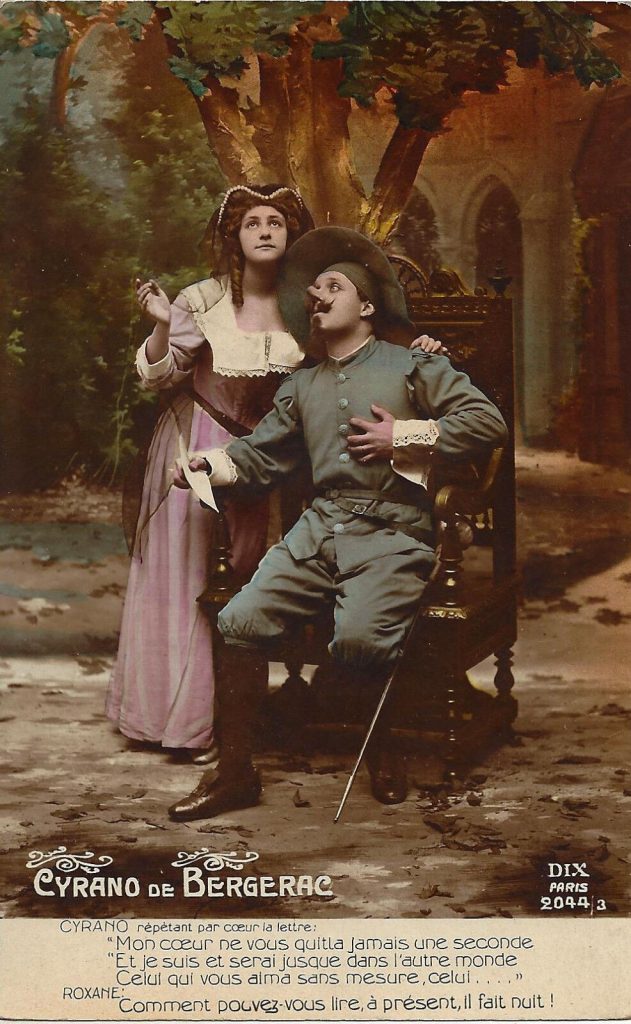
A kiss is a pledge properly sealed, a promise seasoned to taste, a vow stamped with the immediacy of a lip, a rosy circle drawn around the verb ‘to love.’ A kiss is a message too intimate for the ear, infinity captured in the bee’s brief visit to a flower, secular communication with an aftertaste of heaven, the pulse rising from the heart to utter its name on a lover’s lip.
From the Brian Hooker
translation of Cyrano de Bergerac.
In Edmond Rostand’s immortal play Cyrano de Bergerac, chivalry and wit, bravery and love are forever captured in the timeless spirit of romance. Set in Louis XIII’s reign, it is an exciting drama about the finest swordsmen in France, a gallant soldier, a brilliant wit, a tragic poet and lover with the face of a clown – he is the most envied character in French literature.
***
Rostand is best remembered for his masterpieces Cyrano de Bergerac and Chantecler, which are among ten other stage productions and hundreds of poems that have appeared in anthologies for over a century. Born in Marseille, France, on April 1, 1868, Rostand grew up in a household that valued literature and the arts. His father was an economist and a Latin poetry scholar who earned a reputation for his translations of late Roman literature.
International acclaim came to Rostand in 1897 with the premiere of “Cyrano.” The play tells the story of a swashbuckling soldier and poet with a larger-than-life nose. He is very much in love with the beautiful Roxane but is unable to confess his feelings due to his anxieties over his appearance. One of the most memorable scenes in the play is the famous balcony scene, in which Cyrano stands beneath Roxane’s window and woos her with his eloquent declarations of love.
The play became a testament to Rostand’s skill as a wordsmith. His reputation grew and many French audiences were demanding a “look back” at some of his earlier works. Among the immediate revivals were Le Gant rouge (The Red Glove), his first play that was staged (some would say, “without notice”) in 1888 and La Princesse Lointaine (The Princess Far-Away), that he wrote especially for Sarah Bernhardt in 1895. Then, some 66 years later, his 1894 three-act Les Romanesques, was adapted in 1960 by Tom Jones and Harvey Schmidt into the long-running American musical The Fantasticks.
In the spring of 1900 when the Rostand’s sons were ages 6 and 9, Edmond’s health began to fail, the family moved to Cambo-les-Bains, a small town in the Basque Region of France. The move took Rostand away from the Parisian art scene, but the better weather probably added a decade to his life.
Left: an early 20th century postcard. Right: a circa 2008
card purchased at the Rostand Museum.
Rostand wrote only one play in the next thirteen years, but in 1910 he delivered Chantecler, a verse play like all his plays are, in four acts. The production is notable in that all the characters are farmyard animals including the main protagonist, a chanticleer or rooster. The play is a witty fable about a proud rooster who believes himself to be the sun incarnate, and who must come to terms with his own limitations to fulfill his true destiny. Chantecler showcased Rostand’s gift for creating vivid and colorful characters, as well as his talent for blending satire with philosophical themes.
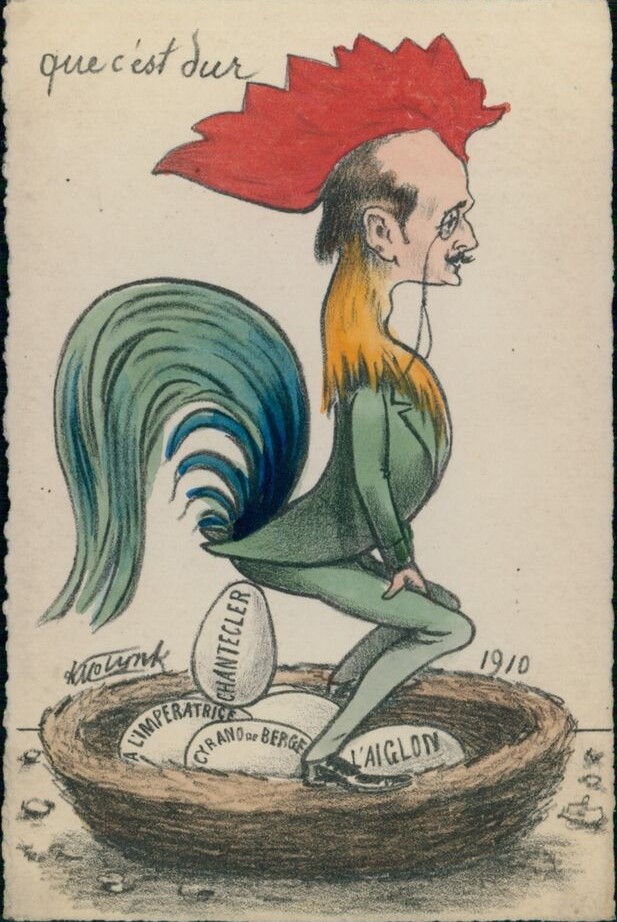
In addition to his literary accomplishments, Rostand was also a devoted husband and father. He had two sons, Jean and Maurice (Jean was a renowned biologist and science historian; Maurice was a successful playwright and poet).
Rostand was also a dedicated member of French society, but there were times when he was at constant odds with the Parisian theatre critics. However his public differences of opinion with the critics was far overshadowed by his well-known philanthropy and his promotion of French arts and culture.
Despite his untimely death in 1918 at the age of 50, Rostand’s legacy lives on because his works are timeless.
***
“Cyrano de Bergerac” for reasons unknown never seemed to catch the imagination of postcard manufactures. There is one set, but they seem to be quite scarce. “Chantecler” is a different story. There are at least three sets; one of the stage production and two artist signed sets. Examples of the sets are included below.
Three examples from a French six-card set.
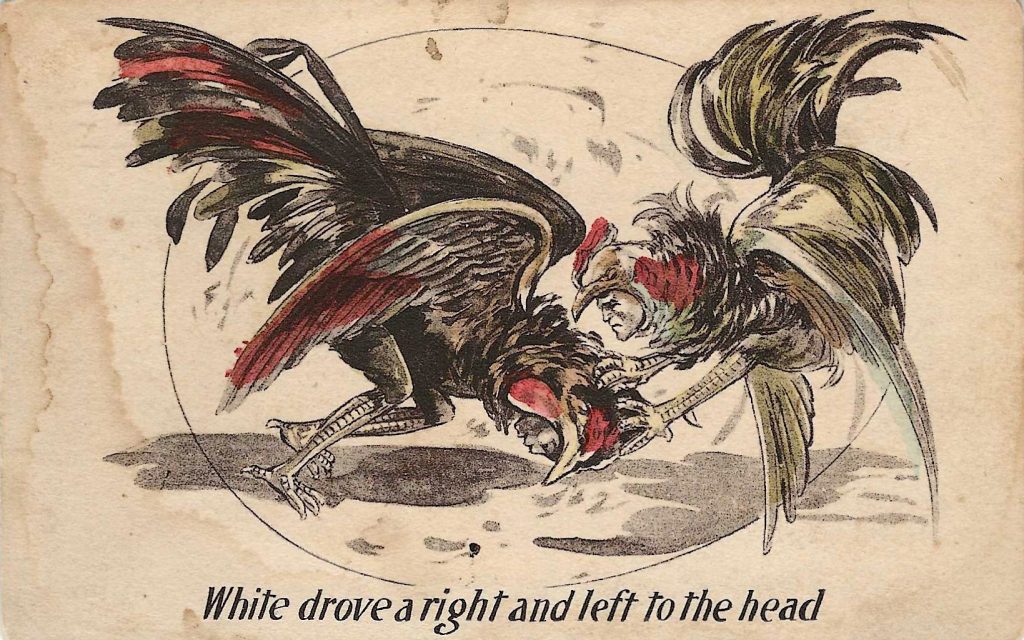


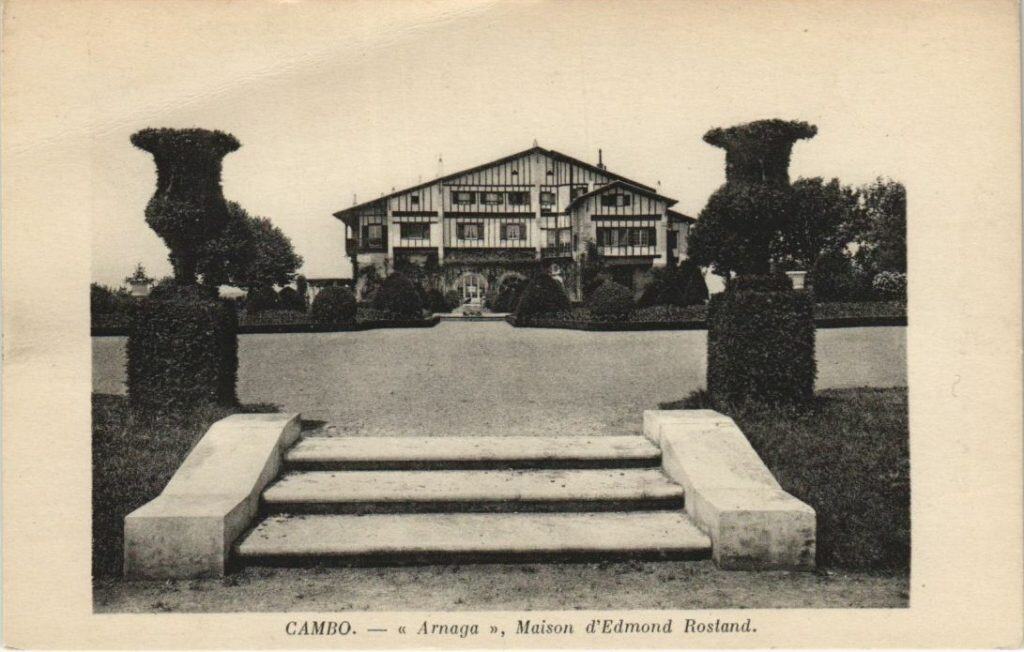

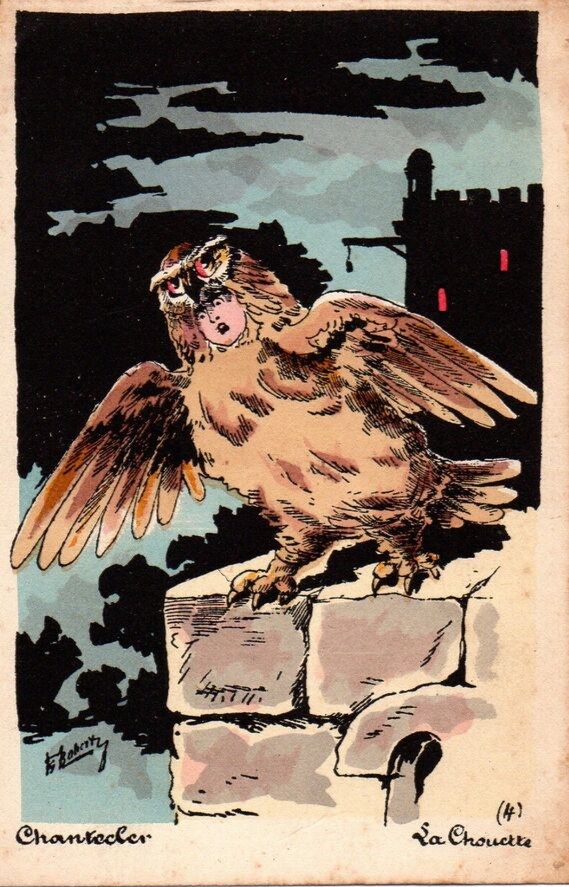
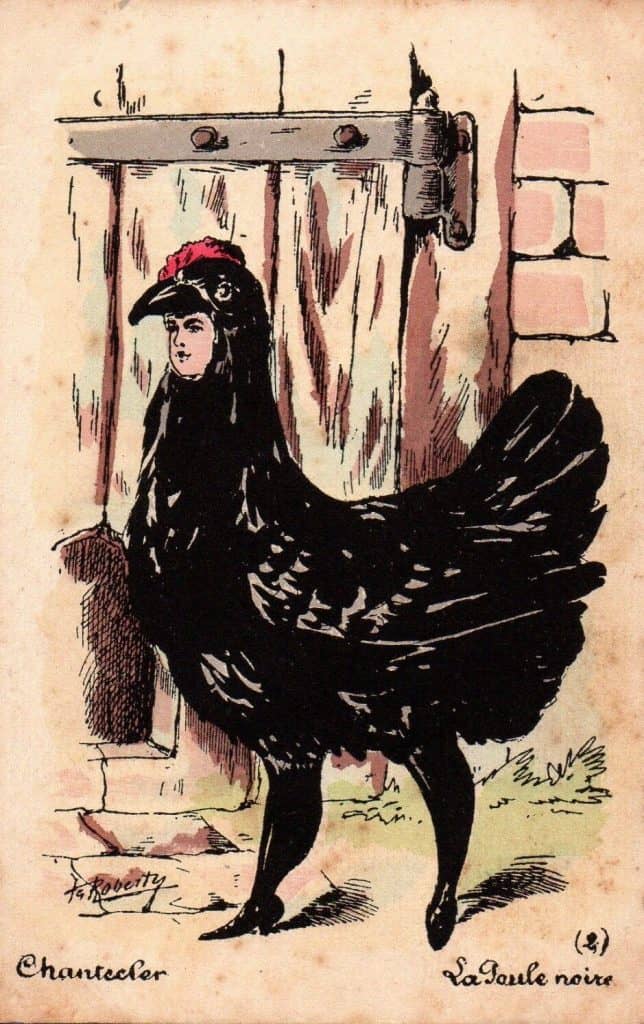

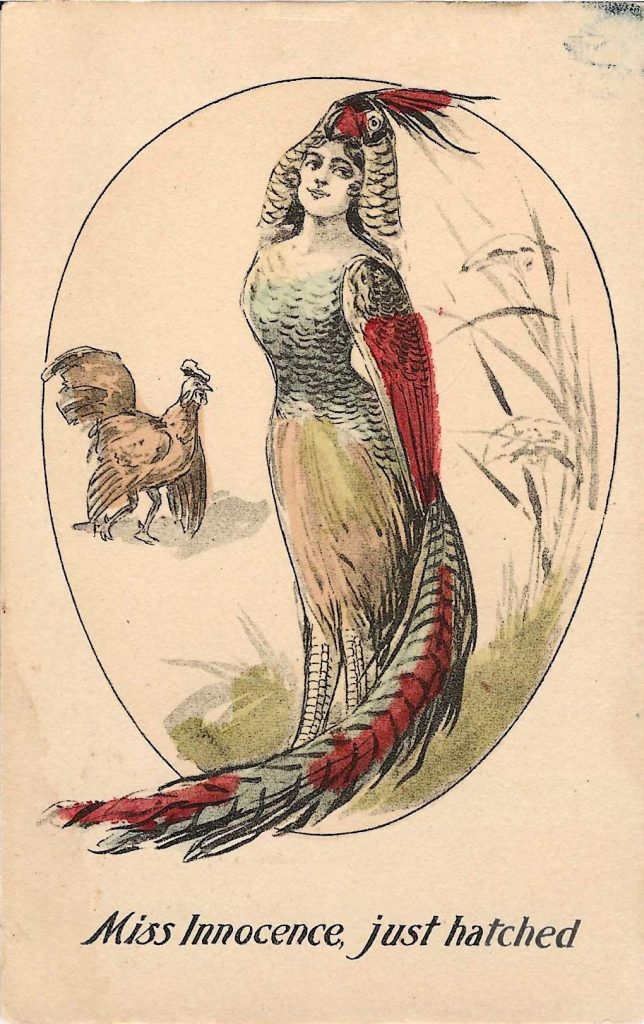
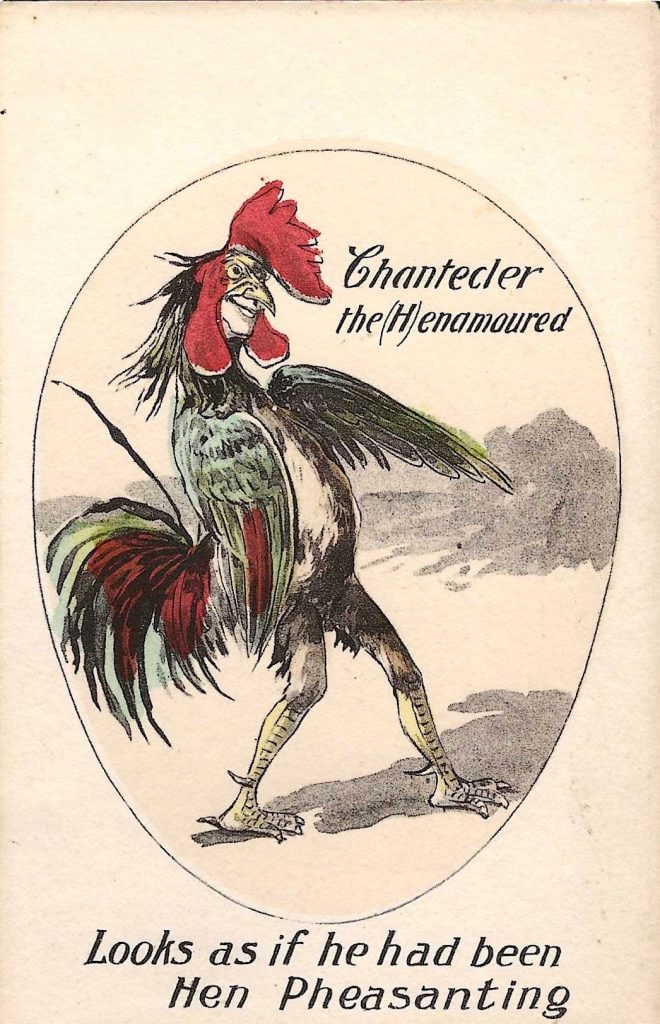
Chantecler (or Chanticleer, as his name is spelled in Chaucer’s work) is also a character in The Canterbury Tales.